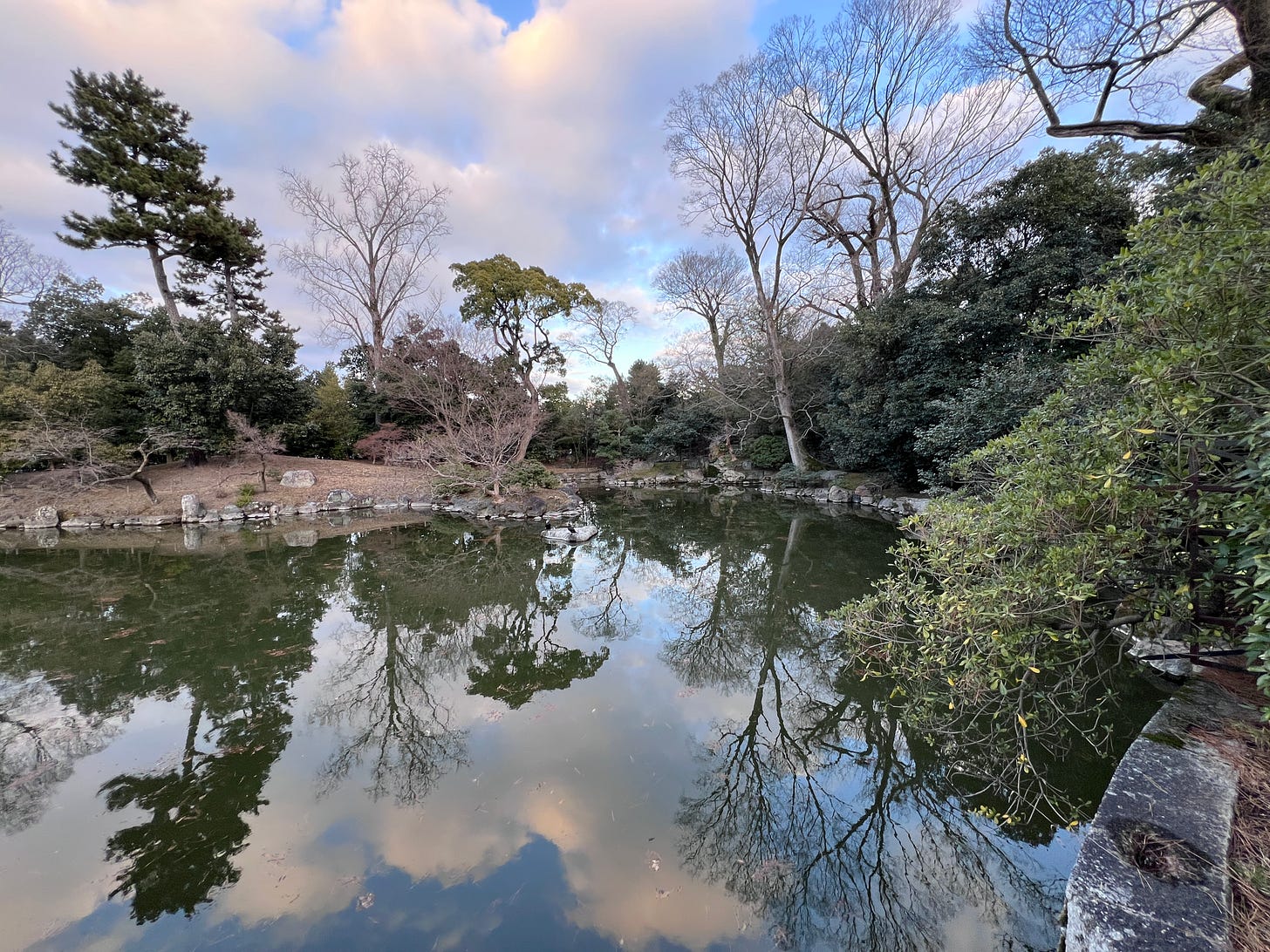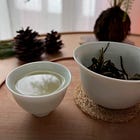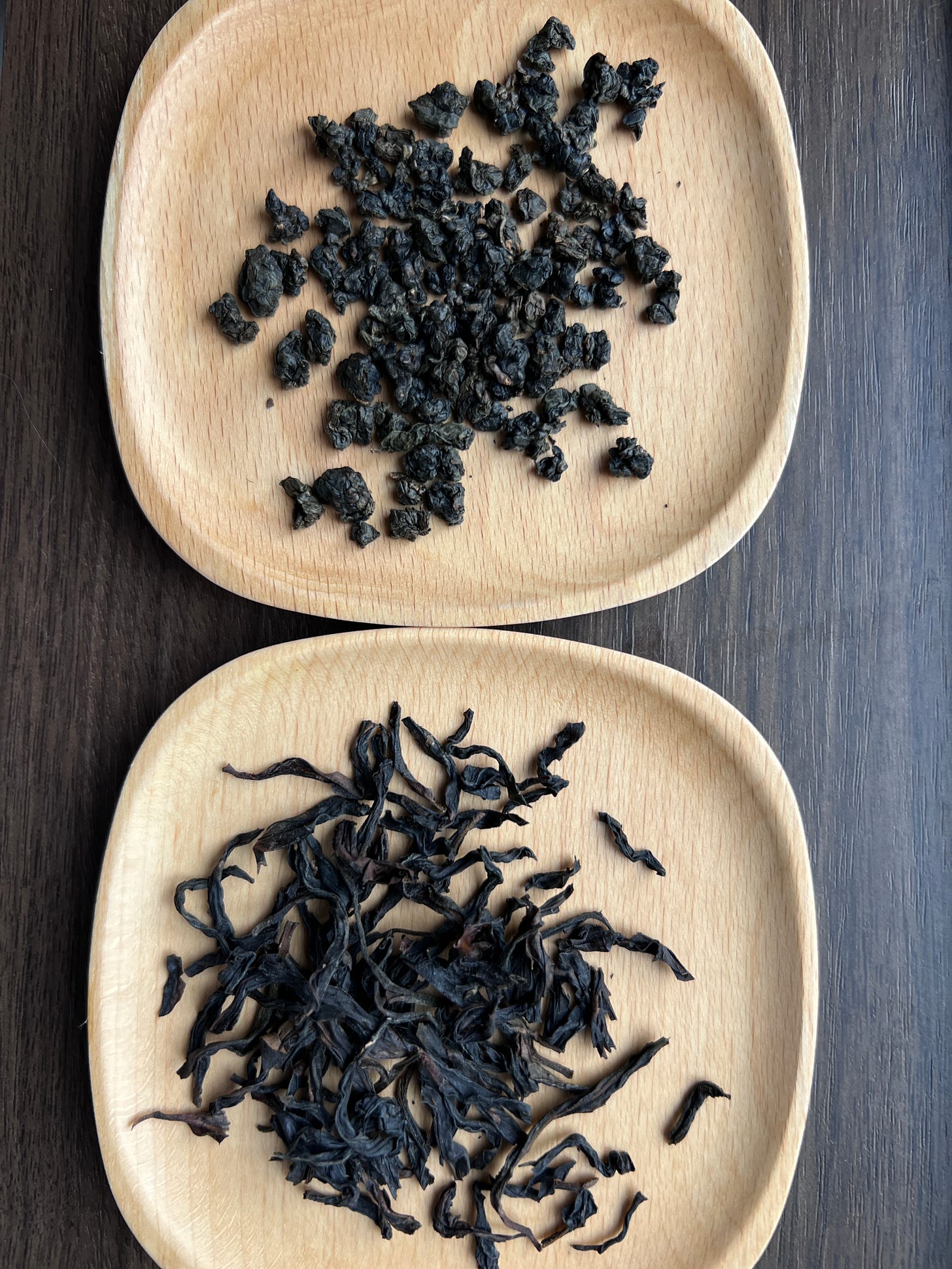Tea, Meditation, and the Flow of Emotions
A journey reconnecting with myself, others, and nature
When one is angry, then the qi rises.
When one is joyous, then the qi relaxes.
When one is sad, then the qi dissipates.
When one is in fear, then the qi moves down.
In case of cold, the qi collects; in case of heat, the qi flows out.
When one is frightened, then the qi is in disorder.
When one is exhausted, then the qi is wasted.
When one is pensive, then the qi lumps together.
- 皇帝内经 2600 BC-300 BC
The Yellow Emperor's Classic of Internal Medicine, an influential text for Traditional Chinese Medicine (TCM)Author’s note: This post is about tea as a practice of reconnection. It is also about parenting - how we show up for ourselves and for others. I am not an expert in parenting nor tea, but someone in the journey of exploring both.
Parenting
Where attention goes, energy flows.
Our youngest child has dramatic meltdowns lately - screaming and outbursts with interactions that can turn into confrontations instantaneously. We know that she is going through major emotional and developmental shifts with potty training and transitions in childcare. It is not easy on her.
Brain develops the fastest during these early years, growing about 90% of its adult size by age five. It is an intense period of development as the prefrontal cortex (responsible for emotional regulation and impulse control) continues to develop into early adulthood. My child is gaining independence yet struggling to regulate big feelings.
During her outbursts, I have tried turning her attention to deep breathing to calm her down. Together, we practice slowing down by saying it out loud: “breathe in” and “breathe out”. Sometimes, that seems to work for a moment.
Our parenting styles have everything to do with our childhood and how we were being parented as we grew up. But we have within us the power to change for our next generations.
In Asia, we are used to strict parenting for the sake of obedience, conformity, and sacrifice; parenting that championed emotional restraint and suppression of feelings to prioritize group harmony. Hiding our emotions is seen as a sign of strength. For example, expressing disgust over food cooked by our parents - and not being able to finish them even if we were full - is perceived as a sign of disrespect. These cultural emphasis have now shifted with globalization and the coming together of multiple cultures.
Internalizing all these intense emotions during early childhood must have significant implications on us Asian adults now, manifesting in a few ways (a bit of simplification so bear with me here):
People-pleasing behaviors with difficulties in setting boundaries: The focus is on conflict avoidance, suppressing own needs to meet the expectations of others, especially authority figures since we were used to pleasing our parents so they don’t get upset with us physically or verbally.
Emotional suppression in adulthood: Children growing up in strict households who were taught to hide or suppress their feelings (where negative emotions, such as feelings of dislike, sadness, anger were discouraged) even in simple daily interactions at home tend to have difficulties in emotional regulation later in life.
I recognize myself carrying tendencies of both, particularly the first category. And it is challenging to shake off the permissive parenting style that I am now most comfortable with as I interact with my own children.
But I believe that parenting (as with tea) is a continuous practice. I can embrace firm and gentle parenting at the same time to help my kids hold boundaries while encouraging them to let their feelings flow. I want them to be able to come to me for safety during their adolescents and adulthood, rather than me being the last person to discover any troubles that they encounter.
So, when my child goes through another meltdown, I want to be able to transform chaos to a moment of connection. I will hold her a safe space by continuing to calm her down with deep breathing, removing whatever that is distressing her, while comforting her verbally. For example, “I know you are angry right now since I put away the toy that you are fighting over with your sister. You are allowed to feel upset. And I am here for you.”
Kids need reassurance from responsible adults (their “external prefrontal cortex”) to manage their emotions. Instead of control, it is about connection. Instead of fueling more resistance, it is an opportunity to welcome and validate feelings.
What about us adults?
Who will hold such safe space for us in times of chaos, overwhelm, distress, and uncertainties? We can turn to others, but mostly we can count on ourselves to decrease our feelings of stress while increasing our sense of security and safety.
Meditation
There are many ways for adults to self soothe.
Taken badly, some turn to harmful extremes - drugs, sex, substance addiction, compulsive behaviors, workaholism, technology obsession, constant anger. The body keeps the score, and sometimes, pains can even manifest in the body as chronic illnesses.
There are numerous positive ways to help us calm down and regain emotional balance. For me, immersive, grounding approaches that take time with a deepening sense of connection work well - from writing, cooking, walking in nature, 1:1 conversations, tea, to meditating.
Just on meditation alone, there are so many approaches, terms, and baggages that can be dizzying. From Samadhi, Vipassana and other Indian religious traditions, ch’an or Zen Buddhism, mindfulness, to Taoist’ sitting and forgetting 坐忘 and fasting of the mind 心齋 (See interpretation by Taoism Reimagined). With some meditation practices seem to encourage “climbing” or “attaining through multiple steps” to refine ourselves.
The Taoist approach to tea meditation or way of tea is refreshing to me. It is about simplicity, following the way of dao 道, recognizing the harmony between humans and nature. Taoism is the philosophy that influences Ch’an Buddhism (precursor to Zen) which blends Taoism with Mahayana Buddhism.
With guided apps, I practice meditation every morning upon waking at 5:30 am for about 20 minutes, mostly with joy but sometimes with sleepiness. The key is consistency in showing up (But meditation can be harmful if practiced incorrectly, without guidance, especially if one is already facing severe mental health challenges).
Tea, senses, and the flow of emotions
We live in nature. Nature lives within us. Our body shares the same elements as the earth with rhythms that align with the nature’s flow.
Our body is similar to the seasons. There is yin 阴 (cool) and there is yang 阳 (warm) energy. But each season is not as distinct as we want them to be. For even in Winter, we are beginning to feel the warm whispers of Spring.
Here in the crisp, still cold of Kyoto, we have recently welcomed 立春 Risshun or the beginning of spring. Though the air remains chill, each day brings the promise of warmth as the sunrise arrives a little earlier and the gentle melody of birds chirping once more fills the air.
There are different types of tea meditation grounding rituals, from chado or Japanese tea ceremony to the Chinese tea ritual of gaiwan 盖碗 brewing. Previously, I have written a bit about chado (see above link on Meditation and the Willow) so will focus in this post the Chinese-style of tea ritual.
Naoko Iwasaki, Founder of Chazen Sodo, shared with me a way of feeling deeply the invisible world of Chinese and Taiwanese tea by sensing, feeling, experiencing, and nurturing a sense of energy through the body.
Natural state: Appreciate the sight, sound, and smell of dry tea leaves.
Initial impression: Taking in the first scent of slightly wet tea leaves (soaked in a small quantity of warm water then poured out)
Second impression: 闻香 Feeling the aroma of tea cup after warm tea leaves are poured out
Closing impression: 品茶 Tasting the tea, feeling for its aftertaste
The following are my brief notes on the aroma of tea leaves and how I felt in the moment based on comparison of two teas. Letting go of my feelings, imaginations, and memories for them to flow freely is not that easy!
Taiwanese JinXuan Oolong Tea (台湾金萱茶): Mandarin orange and the feeling of Autumn → roasted, sweet milk, green tea → evening feel, sweet but lost its green aroma at this stage → sweetness of sugarcane and biscuit, consistent evening feel
Chinese FengHuang DanCong Oolong Tea (凤凰单丛茶): More feminine and more energetic, probably younger than previous tea. Slight aroma of herbs, roasted, dry wood, fruity aroma → sweet pineapple, scent of tropical fruits, open and blooming feel → Aroma gradation not as large as previous tea. This tea is sunnier, more like a late afternoon feel → Tropical fruit and lychee aroma. Sunny and widespread scent.
In any tea meditation practice, the deep and immersive nature of each action - including engaging all the senses - serves as an anchor, gently grounding our busy minds in the present. Each unfolding movement becomes a point of focus, drawing us into a state of awareness. Secondly, it is truly a practice of surrendering and letting go - to peel away layers of distraction and to sink even deeper into the unfolding now, embracing the fullness of this very moment. This moment that will not ever be the same again.
Photos by me. See Instagram | See LinkedIn | See previous posts | About









I really respect and cheer on your awareness and efforts to parent independent of past practices you/we experienced. We do not have to pass on outmoded or outright bad practices to our next generation. 🙏💐🍵
This was a lovely read.
I would go as far as to say: We are nature.
Wuyi Mountain Dahongpao Rock Tea makes me feel so grounded and held at the moment. It’s a hug in a cup.
Raising a cup of tea to you.
Warm wishes from Cornwall.